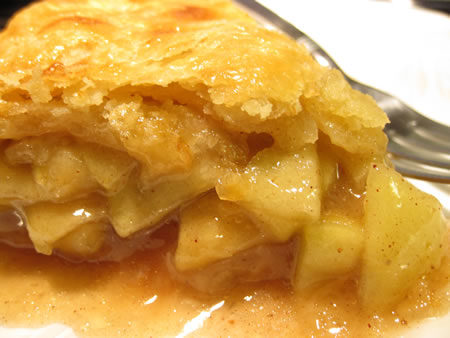The Best Pears to use for Pies
Posted by Warren
Which pears should I use in my pie? How can I tell when a pear is ripe?
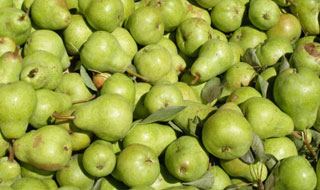
The best pears to use in pies are: Anjou (Red or Green), Bartletts (Red or Green), Bosc, Concorde, and Forelle.
Pears are one of the world’s oldest cultivated fruits. Pears were a valuable and much-desired commodity among the trading routes of the ancient world because of their versatility and storage life.
Pears have long been an elegant still-life muse for artists which is evident in the Renaissance period.
Early colonists brought the first pear trees to America’s eastern settlements. The pear trees were brought west to California, Oregon and Washington by pioneers in the 1800’s. These trees thrived in conditions found in the Pacific Northwest.
Today’s Northwest pear varieties are similar to those first cultivated in France and Belgium. They were prized for their delicate flavor, buttery texture, and storage life.
These pears are good for baking in pies:
Anjou Pears– Best for Pies
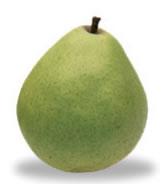
Anjou pears are thought to have originated in Belgium, and they are named after the Anjou region in France.
Commonly referred to by their French name, “d´ Anjou,” Anjou pears are the second-most recognizable pear variety in the United States. It’s the most abundant variety, which means you’ll find Green Anjou pears on produce stands in the U.S. nearly year round.
Their skin color is bright green, and sometimes has a soft red blush. Skin color shows only very subtle color change while ripening.
Seasonality of Green Anjous:
Harvest for Green Anjou pears begins in the fall. They are the most widely available variety through the summer. Many professional chefs choose the Anjou pear for their dishes. Pears are available nearly year-round. Green Anjou pears are PEAR-fect for just about any use, from slicing fresh into salads to baking into pies to pureeing for sauces and beverages.
How to tell when Green Anjous are ripe?
Its skin color remains green as it ripens,
so check the neck for ripeness.
The most important thing to know about Anjou pears is that they do not change color as they ripen. Unlike Bartletts, another familiar green pear variety whose skin color does change to yellow during ripening, Green Anjous will remain green even when fully ripe.
Ripen Anjou pears at room temperature. Depending on their level of ripeness when purchased, Anjou pears may take between three and five days to become fully ripe. Once ripe, you can store them in the refrigerator, where the ripening process will be slowed for a few more days.
Check the neck for ripeness daily by gently pressing your thumb near the stem end of the pear. When it gives slightly, the pear is ripe.
Why do we check the neck of the pears for ripeness?
Because pears ripen from the inside out. The neck is the narrowest part of the pear which is closest to the core. If you wait for the wider bottom half of the pear to become soft, you’ll find the inside to be over-ripe.
Bartlett Pears
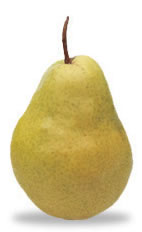
The Bartlett pear color turns from bright green to golden yellow as it ripens. Its creamy, sweet and aromatic flesh is perfect for eating fresh and baking in pies.
Bartletts are aromatic pears, and have that definitive “pear flavor.” Bartletts found in grocery stores are green. They change to yellow as they ripen at home when left at room temperature.
Ripening
The Bartlett pear skin color brightens as it ripens, unlike other types of pears that show little color change as they ripen.
Bosc Pears
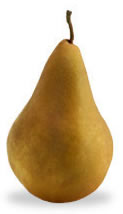
Bosc are an elegant variety. They have distinctive characteristics that set them apart from other pears. Many enjoy Bosc crunchy yet tender flesh and their sweet-spiced flavor.
Bosc pears are identified by their long, tapered necks, long stems, and skin that is naturally russeted to a cinnamon rust color.
They have a dense, fragrant, honey-sweet flesh with a smooth texture that holds its shape well when heated. It is an excellent choice for eating fresh as well as for cooking.
Bosc pears are sweeter and more flavorful earlier in the ripening process than other pear varieties. The honey-sweetness, and juiciness flavor of a Bosc can be enjoyed before their flesh has fully softened.
Ripening
Check the neck for ripeness. Apply gentle thumb pressure at the neck near the stem. It will feel soft and give in. Keep in mind that Bosc will “give” less than other pears when they are ready. Bosc will also show a slight wrinkling at the base of the stem as well as a minimal color change as they ripen. A green hue under the russeted skin will turn more yellow.
Ripen Bosc pears at room temperature and only refrigerate after the pears have ripened.
Concorde Pears
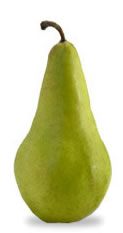
The Concorde pear has tall, elongated neck and firm dense flesh. The skin is golden green and sometimes has golden yellow russeting in spots. Its vanilla-sweet flavor and firm texture holds up well when heated.
Concorde is ideal for any cooking or baking use, as well as for fresh eating. Very little browning occurs when cut or sliced. These are the excellent all-purpose pear.
Ripening
Check the neck for ripeness by applying gentle thumb pressure near the stem end, and when the fruit gives slightly, it is ready to eat. Take special care in handling the fruit.
Bruising may not be apparent right away, but can show their signs as the fruit ripens.
Concordes, like all pears, ripen at room temperature. For best results, place them in a beautiful fruit ripening bowl on the dining room table or kitchen counter.
The more dense flesh of the Concorde makes them ideal as a cooking pear. They hold shape and flavor even when cooked at high heat. Plus, they are naturally slow to oxidize, or turn brown, after being cut.
Forelle Pears

The Forelle has a crisp texture even when ripe, and is perfect for snacking, cooking, and pairing with wine and cheese.
Forelle are crisp, tangy, and refreshingly sweet.
Forelles are one of the few varieties of pears that do change color as they ripen. An attractive red freckling, called “lenticels,” remains brilliantly visible while an underlying green skin turns bright yellow as they ripen.
Forelle are small in size and typically not best for most recipes. They are very sweet, with a flesh that is slightly firmer than most other pears. Good for pear dumpings.


